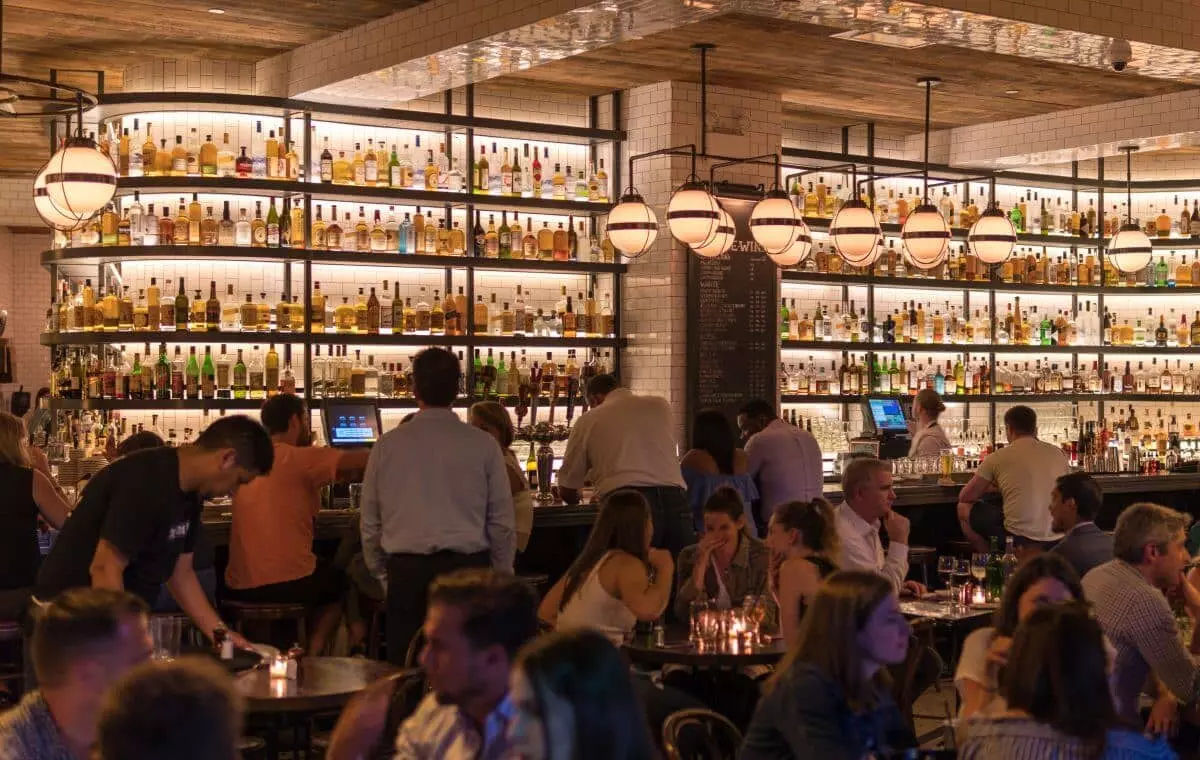Tips to Secure Financing for Your Restaurant Purchase

Becoming a restaurant owner comes with numerous challenges, including purchasing a property. You may require more restaurant funding sources, personal assets, or cash advances to support your business dreams. In such situations, you should seek additional financing options to purchase a restaurant and begin your business journey.
However, restaurant loans and other financing options are only one part of the equation, and there may be better solutions for obtaining financial assistance. You may end up in a sticky situation if you don’t create an effective plan.
Luckily, with the help of our list of tips, you can find the ideal opportunity to become a business owner in the restaurant industry.
Pros and cons of restaurant financing
Receiving business financing has its advantages and disadvantages, and you can determine whether you should take this step based on the ups and downs. Let’s take a look at some of these pros and cons:
Pros
- Building growth opportunities – Instead of worrying about how to purchase a restaurant, you can focus on expanding your business and increasing its cash flow.
- You’ll immediately gain ownership – A business loan will instantly give you the rights to a restaurant. This step means you won’t have to wait to obtain additional finances and regulate your budget.
- Improving workflow – When using personal assets, you may step back from hiring skilled workforce members or utilizing your business assets for marketing. However, with financial help, you can immediately boost your restaurant’s workflow and productivity.
- Building your credit score – While paying off your loan, you can improve your credit score, making room for new financial assistance and negotiation.
Cons
- Interest rates – Sometimes, the interest rates on your restaurant loan may be too high. Aside from paying off the loan, you’ll also have to pay off interest costs.
- Application complexity – Applying for financing options may be daunting, complex, and even overwhelming, as numerous steps are required.
- There’s a risk involved – Borrowing assets from an institution/individual carries a certain amount of risk you probably won’t be able to take off your mind. Furthermore, you’ll have to pay off your loan amount, even if it means leveraging your other assets.

Assess your financial situation
Before you start considering applying for restaurant financing options, you should consider your financial situation. You’ll know whether you can and should opt for business loans and solutions. However, the question arises: “How do you assess your financial situation if you have no previous experience?” Check out some of the tips below for the best results.
Review your assets, savings, and ongoing debt
Calculating your overall net worth is essential for determining whether you can get a restaurant loan and which kind would be the best for you, so you should gather all of your financial statements and get to calculating.
If you have an ongoing bank loan, figure out how much time and assets you need to pay these off and whether it will affect your working capital. It’s recommended that no more than 36% of your income goes to your loans/debt.
Check your credit score
Your credit score can significantly impact your commercial real estate loan. If you have good credit, you can enjoy perks and benefits, such as fixed interest rates, lower monthly payments, etc. On the other hand, bad credit can lead to additional obligations and expenses that will make your restaurant purchasing experience even more challenging. You’ll need to improve your score and credit history to get the best financing deals.

Calculate the approximate cash flow of your future business
To determine the amount of restaurant financing you can get, you should evaluate how much your business line will earn and spend monthly and annually. You’ll see how much profit you’ll have and whether it’ll be sufficient to support the financing options you get.
Determining the approximate cash flow will require creating an intricate business plan containing all expenditures, minimum/maximum monthly revenue, and other elements.
Evaluate the risk
Every small business comes with a particular risk. It’s never sure whether a restaurant will bloom and whether you’ll earn the profits you’ve predicted. Therefore, creating a risk management plan and evaluating the possible downfalls will help you manage your finances better and make the best outcome in every scenario. You’ll have a plan to fall back on if something goes wrong.
Seek professional assistance
Many business owners will seek professional guidance and assistance before starting their companies. Namely, hiring a professional financial advisor can help you create the most effective strategy, increasing your cash flow and decreasing expenditures. Their expertise can help you make the most of your restaurant financing and choose a plan that suits your needs.

Get to know different financing options for your restaurant business
A traditional loan is one of many ways to purchase a restaurant and start your business. Numerous other financing options are available, and you can choose the one that fits your budget and financing preferences best. Therefore, we’ve included some of these additional options, which you can find below.
SBA loan
Small business administration loans, or SBA loans for short, were designed to help all small business owners achieve their dreams. These loan types are excellent for smaller companies as they usually have a lower interest rate than many other financing options.
SBA loans also don’t require a perfect credit score, so you can apply even if you don’t have an admirable history. However, it’s worth noting that this financing option may take longer to approve due to its complexity and requirements (such as ensuring collateral, for example).
Alternative loans
As the name suggests, alternative loans come from lenders willing to support your small business. The application process for these types of loans is usually quicker than with SBA loans, and you’ll have a higher chance of getting the requested loan terms than you would with traditional banks.
Moreover, you don’t have to provide details about your credit score, making alternative loans one of the best solutions for purchasing a restaurant or starting a business in this industry.
However, depending on the alternative lender, you must still fulfill specific requirements. For instance, some lenders may not give you a loan if your small business has been open for less than 30 days.

Restaurant equipment loan
If you don’t need financial assistance to purchase a property but require it to buy new equipment, the name of restaurant equipment loans speaks for itself, and they may be your perfect choice.
You can get equipment financing and completely transform your business, making it more attractive to customers. Such loans usually have relatively small interest rates – you can even find some interest-free ones through government incentives.
A business line of credit
A business line of credit can be considered a credit card for businesses. You can reuse this loan repeatedly but must repay everything you have spent each month. Furthermore, this restaurant financing option is perfect if you need to make smaller, less frequent investments and want to avoid getting a one-time bank loan. Instead, you can purchase everything your business needs bit by bit and return the loans accordingly.
Merchant cash advance
Merchant cash advances include an upfront cash advance you can spend on your restaurant purchase or business improvements. These loans come from other companies instead of banks. The best part about a merchant cash advance is that it’s quick, and you can receive a loan in as little as 24 hours after applying for it.
However, the downside of this loan is that you may have to pay off your debt daily instead of monthly or annually. Nevertheless, this requirement depends on the lender’s preferences and doesn’t apply in all cases.
Term loans
Brick-to-mortar, traditional, or term loans are loans from a bank to open your restaurant franchise and begin your business journey. The interest rate is usually fixed, decreasing the risk related to this type of loan and making risk management more efficient. However, you’ll need a good credit score to apply for and receive this bank loan.
Most financial institutions have a tiny percentage of approved applications for term loans, making obtaining them much more challenging.

Start creating a plan
An element you need to remember revolves around creating a detailed plan for your restaurant. This plan should include creating budgets, maintaining the cash flow, finding the best financing options, boosting your restaurant’s brand, etc.
Such elements will contribute to the final financial outcome, making paying off a loan more manageable. Therefore, we’ve included a few vital elements to consider when creating such a financing plan, which you can find below in detail.
Set clear goals
The first thing to consider is your final destination. Thoroughly think about your business goals. Do you want to expand your business? Do you want to increase your revenues? What’s the last investment in your career? How much do you want to make in the first year?
These are only a few examples of things to consider. When creating your financial plan, answer these questions and ensure you stick to the agenda for the best results.
Budget your way to success
Budgeting can be an extremely beneficial habit to develop. You should create budgets for every new expedition and stick to these to make everything go as planned. Creating a budget will also help you earn the best return on investment and generate the most profit.
You can create your plan around the budget and see how much you can benefit from it. Furthermore, budgeting will stop you from overspending or increasing risks related to restaurant financing options.
Manage cash flow and revenue
Like the abovementioned factor, managing and monitoring your cash flow and revenue is essential for creating a robust financial plan. You should learn to cover your expenses and always have enough liquidity for new investments if attractive options pop up.
Cash flow management will also prepare you for every risky scenario, contributing to a better financial risk management plan and more control over your finances.

Control your finances
Many professionals and experienced restaurant owners will thoroughly examine whether they can and should spend their assets on, for example, new equipment, inventory, or other elements related to the restaurant business. They’ll find the most cost-effective solutions and save money wherever possible.
Therefore, you shouldn’t overspend on your venture if you’re unsure of the outcome – instead, put the money you want to spend into your savings or emergency funds and be prepared to pay off your restaurant loan before making other significant investments.
Understand the application process for restaurant owners
Application processes for restaurant loans may vary depending on the type of restaurant loan you choose. For instance, the application process will significantly differ between SBA and term loans since they have different requirements and steps. It would help if you learned about the desired application process to ensure you receive restaurant financing and finally become a restaurant owner.
We’ve included a few elements you’ll need to thoroughly research when applying for a loan, which you can find below.
Financial documents
Every loan, institution, or private lender requires different financial documents. For instance, a business line of credit will need bank statements and a credit score overview. On the other hand, alternative lenders likely won’t ask you for a credit score but might ask for something else. You must thoroughly research what documents you need before applying for a business loan.
Due diligence
Conducting due diligence refers to ensuring everything is as you have presented it. Lenders use this strategy to check your reliability and see whether you’ll receive business financing. This practice includes visiting the existing location, conducting interviews, and even thorough background checks. Prepare for due diligence to ensure you receive a restaurant loan for your dream business.
A business plan
Restaurant owners will likely need detailed business plans for lenders to see what they’re giving money for. Therefore, you should create a detailed business plan containing your intentions, needs, and wants and present it to the institution or the private lender you’re borrowing from.
They’ll usually assess the risk of your restaurant’s brand and see whether they should give you a business loan. A detailed business plan will help them determine an interest rate according to your status. For instance, small business owners might pay a lower interest rate, but that’s not always true.

Application forms
All restaurant loans require you to complete an application form that the professionals will review and assess before approving the loan. Furthermore, the data you must give out depends even more on the lender or the institution you’re getting the loan from.
In most cases, you must provide general information about yourself, the restaurant, and some financial data. Then, after reviewing your application form, the lenders will decide whether they’ll give you a chance or provide business financing to make your restaurant dreams come true.
Use of funds
Business financing is not just lenders giving you money and allowing you to spend it however you like. Some institutions require you to tell them how you intend to spend the borrowed amount, and they often check whether you’re doing what you said you would.
For instance, if you seek an equipment loan, you must purchase equipment with the borrowed money since the institution can check whether you’re truthful at any moment. Therefore, you should present your plans in detail before applying for a loan.
Create a comprehensive application
After learning what you need to apply for a small business loan, it’s time to take matters into your own hands and join the community of restaurant owners. You can finally use your knowledge and create an application by following the steps below.
Step 1: Collect documents
Since you know what documents you need to apply for a small business loan, you should gather everything required and organize the documents. Get a binder for this purpose and manage all your documents in one place according to their type and importance.
Double-check everything and consult with professionals to see whether you’re missing something. Additionally, you should consider the legal documents needed for applying for a loan (these documents will differ depending on the type of small business loan you’re applying for).
Finally, fill out the application form and print it out. Place it with the other documents in the binder for easy access.
Step 2: Write a cover letter
Write a cover letter to prepare even more and have a backup plan ready. This letter should contain your motives and why you want to join the community of restaurant owners. A cover letter will also give the lenders insight into your plans and business dreams, making the restaurant financing experience more manageable.
In some cases, cover letters can also be the most vital part of a loan. They can significantly boost your chances of receiving a loan if you’re transparent about your plans and want to grow your career. Thus, a cover letter is pivotal and will best explain your intentions.
You should consult with professionals for this step. An experienced professional can help you create the best, most convincing cover letter for the best results when applying for a loan.

Step 3: Proofread
After gathering everything you need, it’s time to triple-check everything. Twice! Review your documents again and ensure everything is well-written and coherent. Check for grammar mistakes, as they may also be pivotal – the better the grammar, the more professional you’ll sound and the higher your chances.
If needed, get someone to help you with this step. You may not get an objective view of your writing if you have written everything yourself. Ask friends or family members to proofread your documents and detect possible errors or mistakes.
Negotiating will lead to securing restaurant financing in Canada
Consider negotiating for the best terms possible if you opt for a loan. That includes lower interests and rates that suit your budget and pace. You can also restructure the payment plan according to your preferences. However, you’ll need a convincing negotiation strategy to achieve any of these.
Take time to create a detailed plan you can present to the lenders. For instance, you should list why a particular plan will be best for you and the lender and show all the opportunities that come with it. Creating an effective strategy may be complicated since you must consider every detail.
We advise you to hire a professional. They’ll inspect the market, see how to ask for better terms and create a strategy accordingly. You should always have a couple of negotiation plans if the first one fails.
Since these strategies should satisfy you and the lender, give something in return when asking for a favor.

Review the terms before closing the deal
Restaurant owners will be given a contract to sign after visiting the lender. It’ll contain all the details about the deal, including terms and conditions, rates, and many other elements. Although the document may seem extensive, reviewing it and viewing your loan’s details is crucial. Some things may be hiding in the fine print that may later come at you like a ton of bricks.
Take the deal and read everything, including the seamlessly essential details. This part is your only chance to find things you don’t like and won’t agree to and negotiate better terms. You can also get advice from professionals for this step, as they’ll know where to find possible loopholes and unfavourable conditions.
After ensuring everything is acceptable and manageable, it’s time to sign. Your financial journey will end once you put your signature on the paper and agree to the written terms.

Hopefully, with the help of our guide, you’ll create the best financing scenario for your future restaurant and get the best deal on the desired loan.
We’ve presented various tips and tricks you can follow to boost your restaurant purchase journey and ensure you get what you’re looking for. Although financing can be challenging, especially for someone doing it for the first time, you can avoid all obstacles by following the tips mentioned above.
Therefore, the only thing left to say is, good luck on your restaurant financing journey! We hope you’ll have the most fulfilling experience, achieve your goals, and purchase the restaurant of your dreams.
FAQ
How do you get financing to invest in restaurants in Canada?
Getting financial options may seem challenging. However, with our help, you can ensure smooth sailing and get the best deals on the market. We’ve presented some tips for obtaining finances, including creating an effective negotiation plan and filing an application.
It is best to consult with professionals and get their help for all the above-mentioned steps. They’ll know which financing options are best for you and will help you apply accordingly.
Do I need special documents to apply for a loan?
The documents you need to apply for a loan may vary depending on the institution and the lender. For instance, if you’re applying for a term loan, you may need to prepare balance sheets and other statements to prove your financial health.
On the other hand, if you’re applying for a small business administration, you may not need as many documents. Research the requirements beforehand to know what to prepare for the application process.
How long will it take to receive restaurant financing?
The time it takes to receive the assets will depend on numerous factors, such as the lender and the complexity of the application. It may also take some time for the institutions to run background checks and ensure you’re trustworthy. The timeframe will also depend on the type of loan you’re applying for.
What strategies can I implement to secure financing for my restaurant purchase?
You can implement several strategies to secure financing for your restaurant purchase. These include creating a detailed financial plan, exploring various funding options, and presenting a compelling case to lenders or investors. Demonstrating a strong understanding of your business and its potential for success can increase your chances of obtaining the necessary capital.
How can I secure financing for my restaurant purchase?
Creating a detailed financial plan outlining all project expenses is essential to secure financing for your restaurant purchase. This plan should include acquiring or renting a commercial property, energy costs, fit-out works, furniture and decor purchases, kitchen equipment procurement, legal and administrative procedures, insurance, initial inventory, and ongoing restaurant management expenses. By accurately estimating these expenses, you can determine the capital required to finance your restaurant’s opening.
Resources
https://www.bankrate.com/real-estate/what-is-the-28-36-rule/







